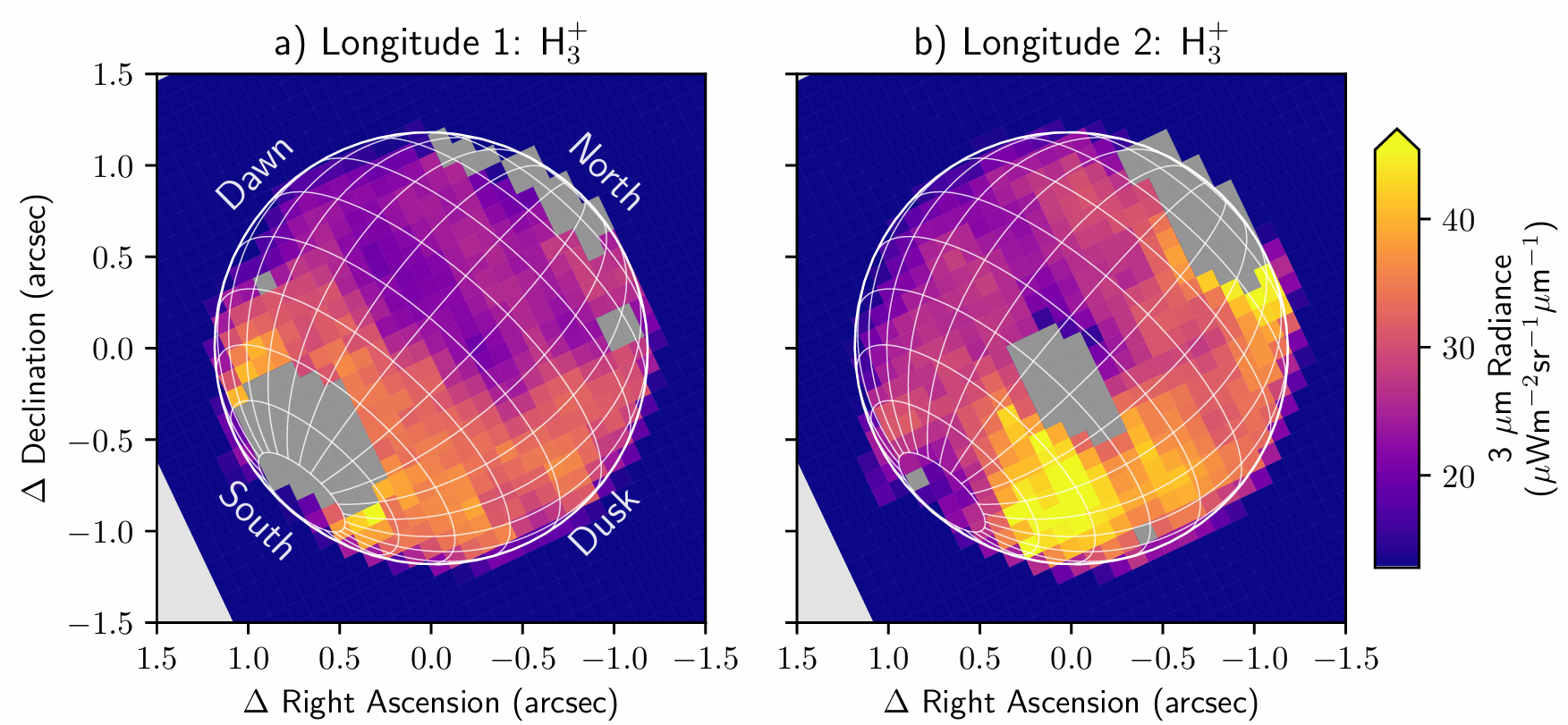MIST
Magnetosphere, Ionosphere and Solar-Terrestrial
Discovery of H3+ and infrared aurora at Neptune with JWST
By Henrik Melin (Northumbria University)
The molecular ion H3+ is a significant component of the ionospheres of the giant planets. By observing the near-infrared emission from this ion we can remotely diagnose the physical conditions of this region. This layer of the atmosphere is an importance conduit for energy transfer between the space environment, magnetic field, and the atmosphere below, and it is in this region that magnetospheric auroral currents deposit energetic electrons that form enhanced temperatures and densities of H3+.
H3+ was discovered at Jupiter, Saturn, and Uranus over 30 years ago and a great number of studies have been able to characterise the processes that occur in the ionospheres of these planets. However, despite many attempts using telescopes on the ground, H3+ has never been observed from Neptune, in spite of models predicting it should be detectable, based on data from the 1989 Voyager 2 encounter.
The James Webb Space Telescope (JWST) is the most powerful telescope ever put into space, designed to observe the first galaxies formed in the early Universe. We can leverage this extraordinary sensitivity to explore our own cosmic backyard, by pointing the telescope at the giant planets. The first JWST observations of Neptune were taken in June 2023, and we were able to detect H3+ for the first time (yay!), as well as localised H3+ emissions about the magnetic pole. In other words, we were able to detect the ionosphere and aurora of Neptune for the first time, exactly 100 years after it was discovered at the Earth (Appleton & Barnett, 1925).

See publication for details:
Melin et al., (2025), Nat. Astro., doi: https://doi.org/10.1038/s41550-025-02507-9